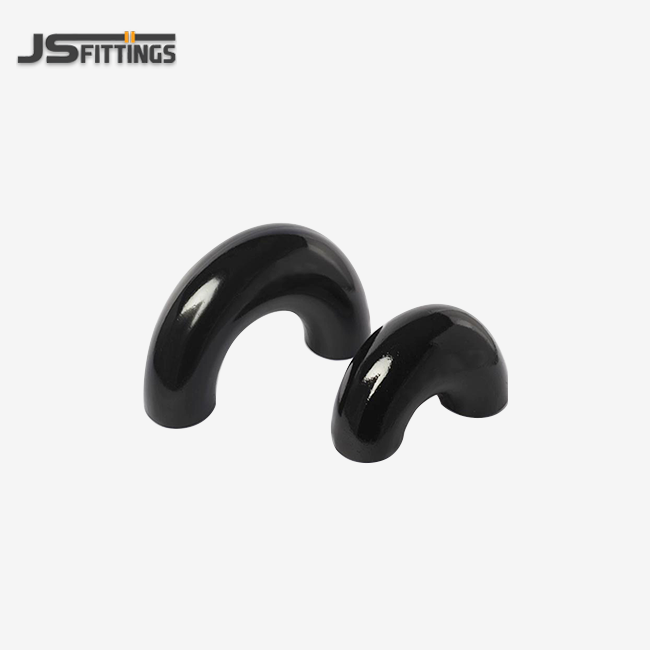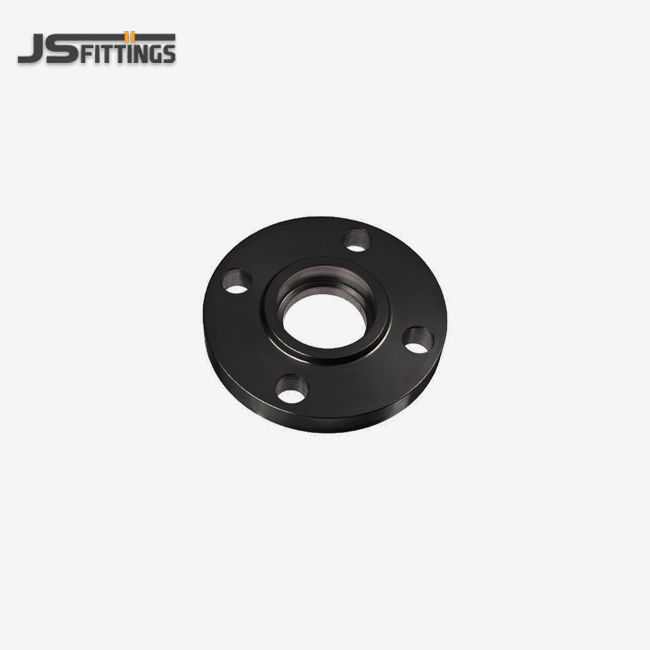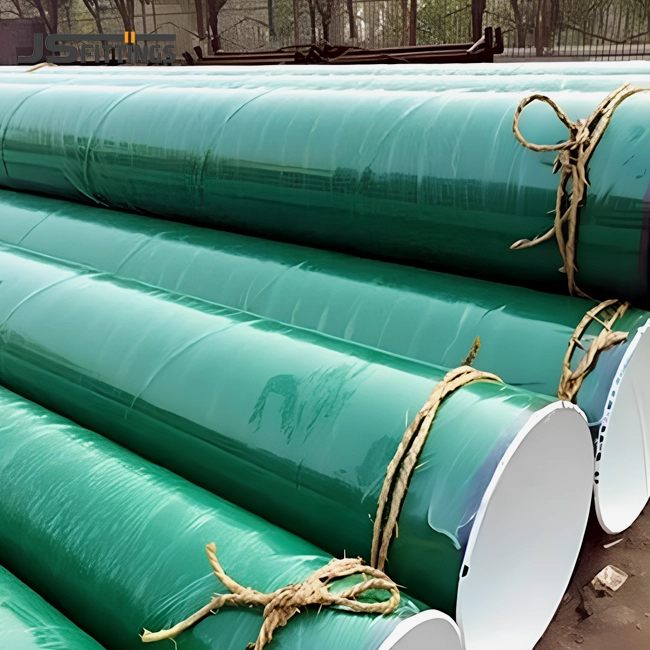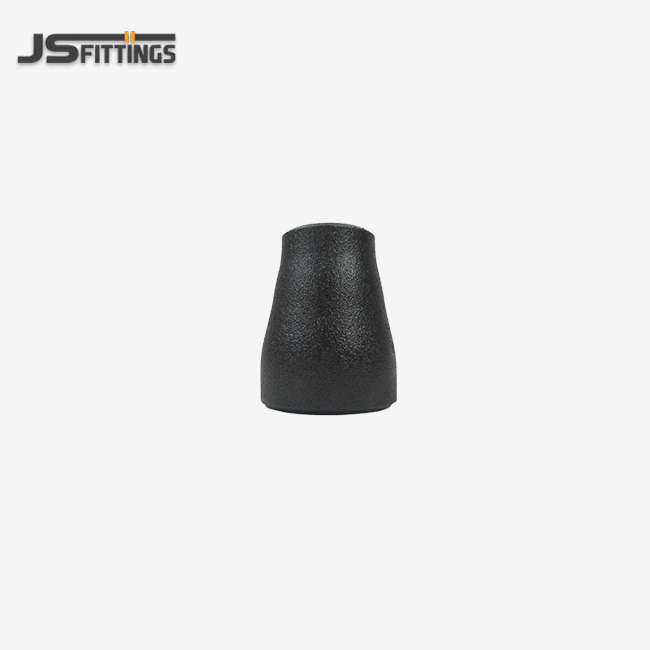When selecting pipe fittings for industrial applications, understanding the distinction between ASME B16.9 Fittings and ASME B16.11 standards becomes crucial for project success. ASME B16.9 governs butt-weld pipe fittings including elbows, tees, reducers, and caps designed for welded connections. Meanwhile, ASME B16.11 covers forged fittings with threaded and socket-weld end connections. These standards differ significantly in manufacturing methods, dimensional tolerances, pressure ratings, and installation requirements, directly impacting project costs, safety compliance, and long-term performance in industrial piping systems.
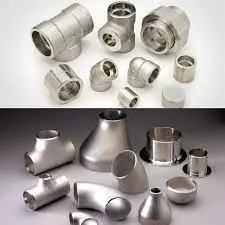
Understanding ASME B16.9 Standard: Butt-Weld Pipe Fittings
ASME B16.9 establishes comprehensive requirements for factory-made butt-weld pipe fittings. This standard covers seamless and welded fittings manufactured from carbon steel, stainless steel, and various alloy materials.
The standard defines specific dimensional requirements for nominal pipe sizes ranging from NPS 1/2 through NPS 48. Wall thickness specifications align with standard pipe schedules, ensuring compatibility across industrial piping systems. Manufacturing tolerances remain tight, with dimensional variations typically within ±1.5mm for most fitting types.
Test data from certified facilities shows ASME B16.9 fittings achieve pressure ratings up to 3000 PSI for carbon steel applications. Temperature capabilities extend from -29°C to 400°C for standard carbon steel grades, while stainless steel variants handle temperatures reaching 800°C.
Key manufacturing processes include:
- Hot forming for seamless construction
- Machining for precise end preparation
- Heat treatment for stress relief
- Non-destructive testing verification
- Dimensional inspection per standard requirements
If you need high-pressure applications with permanent connections, then ASME B16.9 fittings provide superior performance and reliability for demanding industrial environments.
ASME B16.11 Standard: Forged Fittings Specifications
ASME B16.11 addresses forged pipe fittings designed for threaded and socket-weld connections. These fittings serve smaller diameter applications, typically covering nominal pipe sizes from NPS 1/8 through NPS 4.
Forged construction methods create superior strength characteristics compared to cast alternatives. The standard mandates specific material requirements, including carbon steel, stainless steel, and nickel alloy compositions. Manufacturing processes involve hot forging followed by machining operations to achieve final dimensions.
Pressure ratings for ASME B16.11 fittings vary by class designation:
- Class 2000: Working pressures up to 2000 PSI
- Class 3000: Working pressures up to 3000 PSI
- Class 6000: Working pressures up to 6000 PSI
- Class 9000: Working pressures up to 9000 PSI
Socket-weld connections require specific gap dimensions between pipe and fitting shoulder. Test results indicate optimal gaps of 1.6mm provide adequate thermal expansion accommodation while maintaining joint integrity.
If you need compact installations with removable connections, then ASME B16.11 fittings offer versatility and maintenance accessibility for smaller piping systems.
Manufacturing Process Differences
The manufacturing approaches between these standards create distinct performance characteristics. ASME B16.9 fittings utilize forming processes that maintain material grain flow, enhancing stress distribution capabilities.
Butt-weld fitting production involves:
- Material selection and inspection
- Hot forming or cold forming operations
- Machining for dimensional accuracy
- Heat treatment for property optimization
- Surface finishing and marking
Forged fitting manufacturing follows different protocols. Starting materials undergo heating before forging operations. Subsequent machining creates threaded connections or socket-weld preparations. Quality control measures include material traceability and mechanical property verification.
Production efficiency varies significantly between standards. ASME B16.9 fittings require specialized forming equipment but achieve higher production rates for larger sizes. Forged fittings demand intensive machining operations, particularly for threaded connections.
Manufacturing tolerances reflect different application requirements. Butt-weld fittings maintain looser dimensional tolerances since welding processes accommodate minor variations. Forged fittings require precise threading dimensions to ensure proper assembly.
If you need cost-effective production for large-diameter applications, then ASME B16.9 manufacturing processes deliver optimal efficiency and material utilization.
Dimensional Standards and Size Ranges
Size availability represents a fundamental difference between these standards. ASME B16.9 covers extensive size ranges accommodating major industrial applications, while ASME B16.11 focuses on smaller diameter requirements.
ASME B16.9 size specifications extend from NPS 1/2 through NPS 48 for most fitting types. Wall thickness options align with pipe schedule designations including Schedule 10, 40, 80, 160, and XXS. Center-to-end dimensions vary by fitting type and size, with 90-degree elbows ranging from 38mm for NPS 1/2 to 1524mm for NPS 48.
ASME B16.11 size ranges span NPS 1/8 through NPS 4 for most configurations. Socket dimensions accommodate standard pipe outside diameters with specific bore requirements. Thread specifications follow ASME B1.20.1 standards for pipe threads.
Dimensional verification testing shows:
- ASME B16.9 center-to-end dimensions: ±3mm tolerance
- ASME B16.11 socket depth: ±0.8mm tolerance
- Thread engagement length: minimum 4 complete threads
- Wall thickness variations: ±12.5% standard allowance
Installation space requirements differ considerably. Butt-weld connections require access for welding equipment, while socket-weld and threaded connections need wrench clearance for assembly.
If you need comprehensive size coverage for large-scale projects, then ASME B16.9 dimensional standards provide complete solutions for industrial piping requirements.
Pressure Ratings and Temperature Capabilities
Pressure and temperature performance characteristics vary between these standards based on connection methods and material properties. Design calculations follow different approaches reflecting joint configuration differences.
ASME B16.9 pressure ratings derive from pipe wall thickness and material properties. Standard pressure-temperature ratings for carbon steel reach 285 bar at 38°C, decreasing to 64 bar at 400°C. Stainless steel grades maintain higher temperature capabilities with 285 bar at 38°C and 129 bar at 649°C.
ASME B16.11 pressure ratings depend on class designations and connection types. Socket-weld connections typically achieve higher pressure ratings than threaded alternatives due to superior joint integrity. Class 9000 fittings handle working pressures up to 620 bar for carbon steel applications.
Temperature limitations vary by material selection:
| Material Grade | ASME B16.9 Max Temp | ASME B16.11 Max Temp |
|---|---|---|
| Carbon Steel A234 WPB | 400°C | 400°C |
| Stainless Steel A403 WP316 | 800°C | 800°C |
| Alloy Steel A234 WP22 | 593°C | 593°C |
Pressure testing requirements mandate hydrostatic testing at 1.5 times working pressure for both standards. Additional testing may include pneumatic testing for specific applications.
If you need maximum pressure capabilities for critical applications, then ASME B16.11 Class 9000 fittings deliver superior performance ratings for high-pressure service conditions.
Installation Methods and Joint Integrity
Installation procedures create significant operational differences between these fitting types. Joint preparation, assembly techniques, and quality control requirements vary substantially.
Butt-weld installation demands skilled welding personnel and proper equipment. Pipe end preparation requires precise cutting and beveling to match fitting geometry. Welding procedures must follow qualified procedures with appropriate filler materials and heat treatment requirements.
Socket-weld connections require specific assembly procedures. Pipe insertion to socket bottom followed by 1.6mm withdrawal prevents stress concentration during thermal cycling. Fillet welding around socket perimeter creates sealed connection.
Threaded connections offer field assembly advantages but require proper thread compound application. Installation torque specifications prevent over-tightening while ensuring adequate sealing pressure.
Quality assurance procedures include:
- Visual inspection of joint preparation
- Dimensional verification before assembly
- Non-destructive testing as required
- Pressure testing after completion
- Documentation of installation procedures
Installation time varies significantly. Threaded connections provide rapid assembly while butt-weld joints require substantial welding time. Socket-weld connections offer intermediate installation duration.
If you need rapid installation with minimal equipment requirements, then ASME B16.11 threaded fittings enable efficient field assembly for maintenance and modification applications.
Cost Analysis and Economic Considerations
Economic factors influence fitting selection decisions across project phases. Initial costs, installation expenses, and lifecycle considerations impact total project economics.
Material costs reflect manufacturing complexity and size requirements. ASME B16.9 fittings typically cost less per unit for larger sizes due to efficient forming processes. Smaller diameter applications may favor ASME B16.11 fittings despite higher material costs.
Installation cost analysis reveals significant variations:
- Butt-weld connections: High labor costs, permanent installation
- Socket-weld connections: Moderate labor costs, semi-permanent installation
- Threaded connections: Low labor costs, removable installation
Maintenance economics favor different approaches based on system requirements. Permanent butt-weld connections eliminate future joint maintenance but require cutting for modifications. Threaded connections enable component replacement without pipe cutting.
Inventory management costs differ substantially. ASME B16.9 size ranges require extensive stock levels for comprehensive coverage. ASME B16.11 smaller size focus enables manageable inventory investment.
Project scheduling impacts vary by fitting type. Butt-weld installation requires specialized welding crews and inspection procedures. Threaded assembly enables general mechanical personnel utilization.
If you need optimal project economics with long-term reliability, then ASME B16.9 fittings provide cost-effective solutions for permanent industrial installations.
JS FITTINGS ASME B16.9 Fittings Advantages
JS FITTINGS delivers exceptional ASME B16.9 pipe fittings backed by four decades of manufacturing excellence and proven performance across global industrial applications.
- Superior Manufacturing Capability: Four advanced production lines equipped with state-of-the-art forming and machining equipment ensure consistent quality and dimensional accuracy for all ASME B16.9 fitting requirements.
- Comprehensive Certification Portfolio: ISO 9001, CE, and GOST-R certifications demonstrate commitment to international quality standards, enabling seamless compliance with global project specifications.
- Extensive Material Expertise: Complete material coverage including carbon steel, stainless steel, and specialty alloys with full traceability documentation supporting critical application requirements.
- Proven Global Experience: Successful project deliveries across Middle East, South America, Europe, and Asia provide deep understanding of diverse industrial requirements and regional compliance standards.
- Advanced Quality Control: Rigorous testing protocols including dimensional inspection, mechanical property verification, and non-destructive testing ensure every fitting meets or exceeds ASME B16.9 specifications.
- Competitive Pricing Structure: Efficient manufacturing processes and strategic sourcing enable competitive pricing without compromising quality or performance standards.
- Technical Support Excellence: Experienced engineering team provides comprehensive technical assistance for material selection, application guidance, and project-specific requirements.
- Reliable Supply Chain: Established production capacity and inventory management systems ensure consistent availability and on-time delivery for critical project schedules.
- Continuous Improvement Focus: Ongoing process enhancement initiatives drive quality improvements and cost optimization while maintaining superior product performance.
- Customer-Centric Approach: Flexible manufacturing capabilities accommodate custom specifications and special requirements supporting unique project applications.
Application Guidelines for Industrial Projects
Selecting appropriate fitting standards requires careful evaluation of project parameters including system requirements, operational conditions, and maintenance strategies.
ASME B16.9 applications excel in:
- High-pressure transmission systems
- Large-diameter process piping
- Permanent installation requirements
- Continuous operation environments
- Critical safety applications
ASME B16.11 applications prove ideal for:
- Instrument and control connections
- Sampling and drain systems
- Auxiliary equipment connections
- Maintenance-intensive applications
- Space-constrained installations
Material selection considerations include corrosion resistance, temperature capabilities, and mechanical properties. Carbon steel grades suit general industrial applications while stainless steel serves corrosive environments.
System design integration requires coordination between piping layouts, support structures, and equipment connections. Joint accessibility for installation and maintenance influences fitting selection decisions.
If you need comprehensive piping solutions for large-scale industrial projects, then ASME B16.9 fittings provide reliable performance and cost-effective installation for demanding applications.
Conclusion
Understanding the fundamental differences between ASME B16.9 and ASME B16.11 standards enables informed decision-making for industrial piping projects. ASME B16.9 fittings excel in large-diameter, high-pressure applications requiring permanent installation, while ASME B16.11 fittings serve smaller systems needing installation flexibility.
Manufacturing processes, dimensional requirements, and connection methods create distinct performance characteristics suited to different applications. Cost considerations, installation requirements, and maintenance strategies further influence optimal standard selection.
JS FITTINGS provides comprehensive ASME B16.9 fitting solutions backed by manufacturing excellence, global experience, and technical expertise. Our commitment to quality, competitive pricing, and customer satisfaction supports successful project outcomes across diverse industrial applications worldwide.
Partner with JS FITTINGS for Your ASME B16.9 Fitting Requirements
Choosing the right ASME B16.9 fittings manufacturer directly impacts project success, safety compliance, and long-term operational reliability. JS FITTINGS combines four decades of manufacturing expertise with advanced production capabilities to deliver superior pipe fitting solutions for demanding industrial applications.
Our comprehensive product portfolio covers complete ASME B16.9 specifications including elbows, tees, reducers, and caps in carbon steel, stainless steel, and specialty alloy materials. Advanced manufacturing processes ensure dimensional accuracy, mechanical properties, and surface finish quality that consistently exceed industry standards.
Global project experience across Middle East, South America, Europe, and Asia provides deep understanding of regional requirements and international compliance standards. ISO 9001, CE, and GOST-R certifications demonstrate unwavering commitment to quality management and customer satisfaction.
Technical support excellence includes material selection guidance, application engineering assistance, and project-specific customization capabilities. Our experienced team collaborates closely with EPC contractors, distributors, and end users to optimize fitting specifications for each unique application.
Competitive pricing strategies combined with reliable supply chain management ensure cost-effective solutions without compromising quality or delivery performance. Strategic inventory management and flexible production scheduling accommodate urgent project requirements and standard delivery timelines.
Ready to discuss your ASME B16.9 fittings requirements with a trusted supplier? Contact our technical team today to explore how JS FITTINGS can support your next industrial project with reliable, high-performance pipe fitting solutions. Reach out to contact us at admin@jsfittings.com for detailed product specifications, competitive quotations, and technical consultation services.
References
1. American Society of Mechanical Engineers. "ASME B16.9-2018: Factory-Made Wrought Buttwelding Fittings." ASME International, 2018.
2. American Society of Mechanical Engineers. "ASME B16.11-2016: Forged Fittings, Socket-Welding and Threaded." ASME International, 2016.
3. Nayyar, Mohinder L. "Piping Handbook." 8th Edition, McGraw-Hill Professional, 2019.
4. Singh, Kanti P. "Mechanical Engineer's Handbook: Materials and Mechanical Design." 4th Edition, John Wiley & Sons, 2020.
5. Barlam, David M. "Industrial Pipe Fitting Standards and Applications." Engineering Press, 2021.
6. International Association of Plumbing and Mechanical Officials. "Pipe Fitting Design and Installation Guide." IAPMO, 2022.
